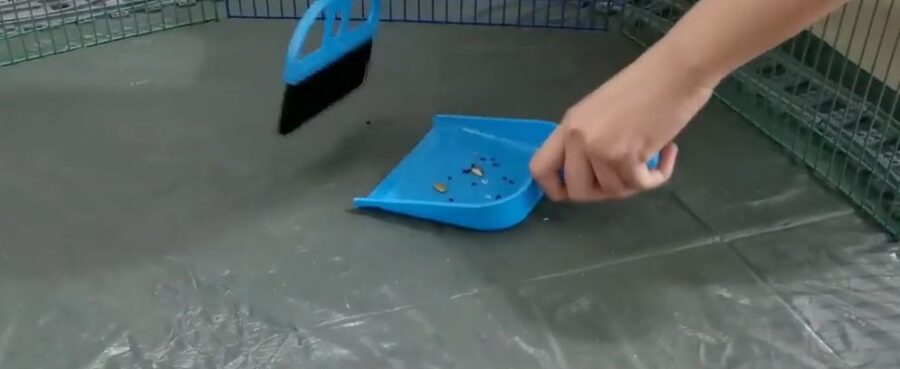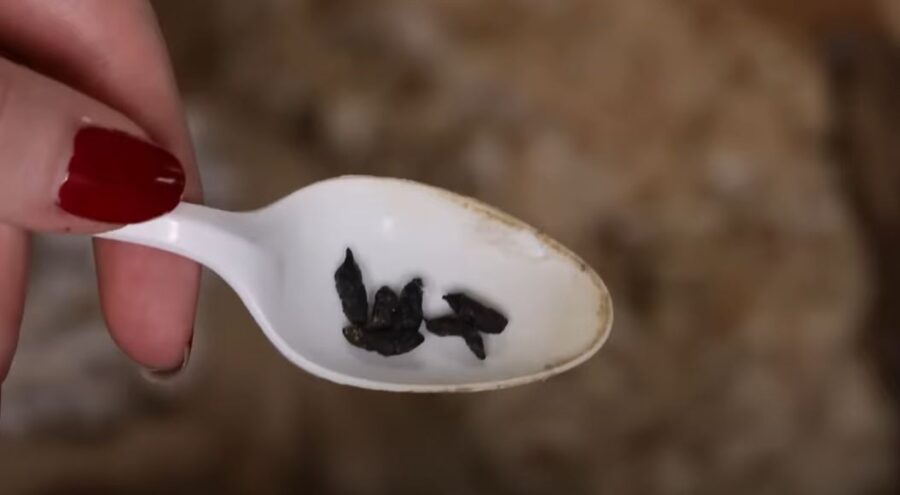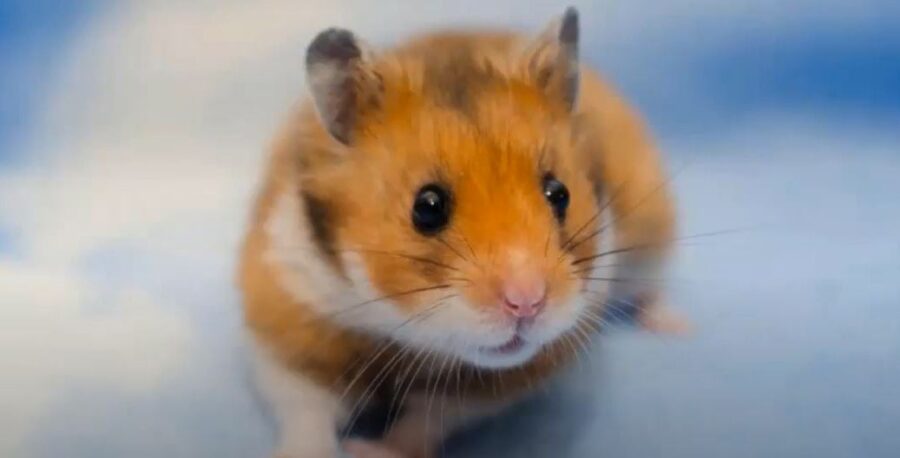My hamster poops in different places at different times making it very unpredictable for me to set up a cleaning schedule. How to clean hamster poop depends on many factors.
Let’s talk about spot cleaning, cage maintenance, hamster hygiene and our own safety when cleaning hamster poo.
In this article, we will give you the scoop on hamster poop.
How to Clean Hamster Poop
Use unscented soaps or chemical cleaners. Vinegar and water works well or a drop of baby soap on a rag is fine if you avoid going near your hamster’s ears, nose and mouth.
Remove all their bedding, toys, wheel, bottle and bowls. Clean them separately while you focus on the cage with the poop and urine stains. Leaving a small piece of old bedding allows hamsters to familiarize themselves with their home using their sensitive sense of smell.
Replace the rest of the bedding and place all objects back in the cage without rearranging too often. Hamsters are sensitive to changes to a setup that they are accustomed to.
Always remember to use gloves (rubber, latex) and have a scooper on hand to pick dry pieces of rodent fecal matter. A small broom and dustpan works well, but an old toothbrush may help you scrub down areas that are hard to reach for those weekly cage cleaning sessions.

Do I Have To Clean Hamster Poop?
Yes. Hamsters do not control their bowels very well. They will poo all day and may not even poo in the same spot. My hamster’s crap ends up in his food bowl sometimes, near his nest or in random locations that are easy to miss when you’re not looking for it.
Daily spot cleaning on the hamster cage and making sure there isn’t any defecation stuck on their bodies, limbs or fur keeps us on our toes. We decided to run a quick wet tissue check each morning for a few seconds and a better spot cleaning in the evenings.
Finally, we recommended a full cage cleaning at the end of the week where all items are removed, cleaned out and I bet you’ll find a few pieces of feces that you may not have noticed that may have been sitting around in the cage for more than a week or two.
Help! My Hamster Stepped in Poo
Your hamster doesn’t want to get dunked in water. This is stressful and can be avoided most times. Hamsters are great at grooming themselves, but what if they step in poop?
The feces could get dragged around or spread to areas of the cage that leaves you with no choice but to clean everything all over again. A little warm water with vinegar or a drop of shampoo on a rag will suffice.
Avoid your hamster’s nose, eyes and mouth. Spot clean by gently dabbing the rag on your hamster’s limbs or area where you see the feces stains.
You can always use a scooper, plastic spoon or gloved hands if you spot the droppings on or near their bedding, bowls or elsewhere in the cage.

Is Hamster Poop Unsafe For Humans?
With all foreign bacteria comes risks. Lymphocytic choriomeningitis is a rodent viral infection originally deriving from the lymphocytic choriomeningitis virus (LCMV). We as humans can develop this infection when we are exposed to it from our hamsters.
If we make contact with the following, we must carefully and immediately wash our hands thoroughly:
- Urine
- Droppings (poop)
- Saliva
- Nesting material
- Infected rodents
If we have broken skin, cracked cuticles or long fingernails, the virus can easily transfer over to us. If a hamster happens to bite us accidentally or on purpose, this virus or other risks that are concerning can cause us to to be more careful.
Gloved hands or using tools such as a scooper or even a plastic spoon for all future cleaning and cage maintenance is a must for me.

Can I Train My Hamster To Poop In One Place?
Good luck! This will make cleaning hamster poo much easier if you can collect it all from one location. Unfortunately, hamsters also pee everywhere as well. Their bedding can be urine soaked without you seeing it, but you can probably smell it.
Potty training a hamster and hamster bladder control is a difficult task. The food bowls, water bottle, toys and wheel must be cleaned each week no matter what.
Work with the cage setup to create spaces where it would be more natural for a hamster to defecate there. Hamster prefer corners for pee and poo. One corner could be full of feces while the other may contain pee stains.
A bottle of vinegar and water will come in handy to safely disinfect the areas where you are cleaning urine and poo stains. The process will be easier with routined practice compared to multiple attempts at treat training, vocal training or other methods of trying to teach potty training to a hamster.

Does Hamster Poop Smell Bad?
Usually the poop is dry and the feces doesn’t contain a strong odor. If your hamster has runny poo, this could create a stronger odor.
Most of the time, the foul odor is from urine stains that could be located in one corner or spread over the bedding and nesting area. Unfortunately, most hamsters do not pee and poop in the same location.
This rodent doesn’t realize how much harder it is for us to clean hamster poop and maintain a clean cage when they do not discriminate locations and set up routines for their poo schedule.
Also look out for hamster food that they naturally wish to stash away for later. This uneaten food will be forgotten when you continue supply more food. It could rot and smell pretty bad as well.
How Many Times Does A Hamster Poop A Day
Hamsters have a relatively high metabolic rate, and as a result, they tend to produce a significant amount of feces. On average, a hamster will poop anywhere from 1 to 3 times a day.
This can vary depending on factors such as the hamster’s diet, activity level, and overall health.
It’s important to note that hamster feces are small and pellet-shaped, making them easy to clean and manage. Regularly cleaning the hamster’s enclosure is essential to maintain a clean and hygienic living environment for your pet.
If you notice a significant increase or decrease in the frequency of your hamster’s bowel movements, or if you observe any abnormal characteristics in their feces such as changes in color, consistency, or the presence of blood, it may be an indication of an underlying health issue.
Thank you for visiting PocketPetCentral.com for the best information to help you enjoy the life of your pocket pet companion in a fun, safe & healthy way.

